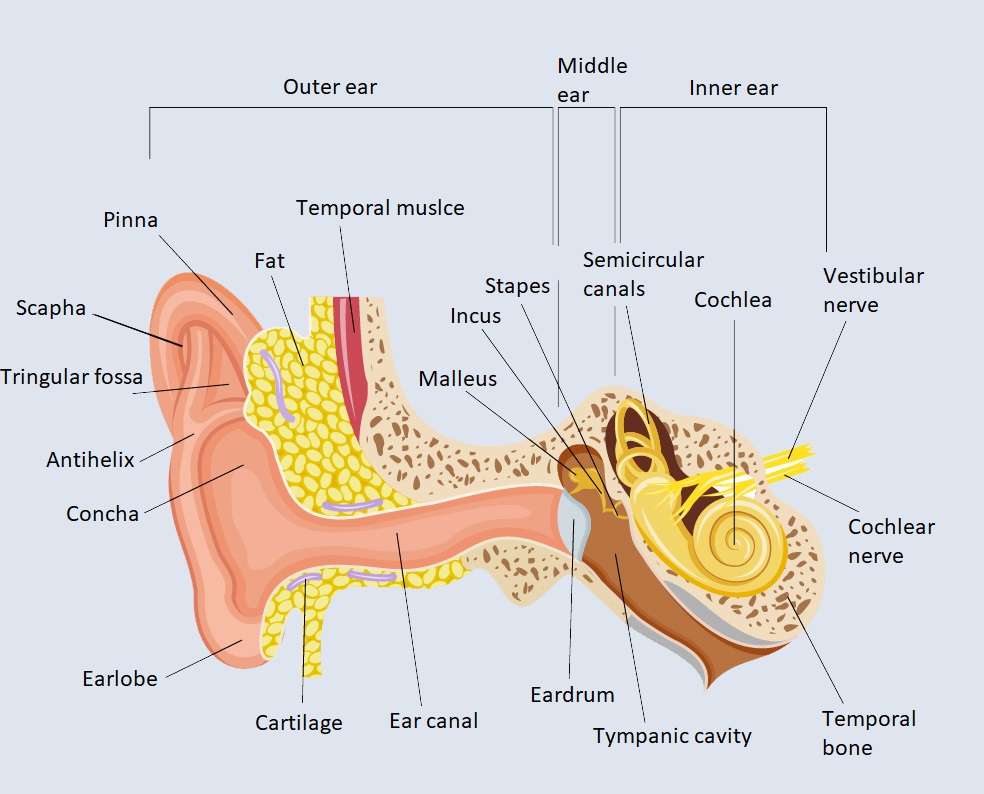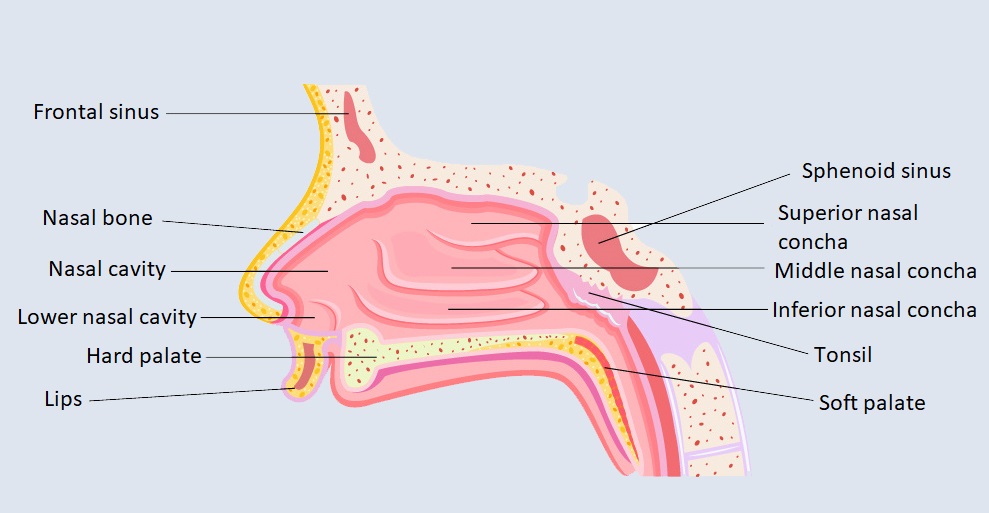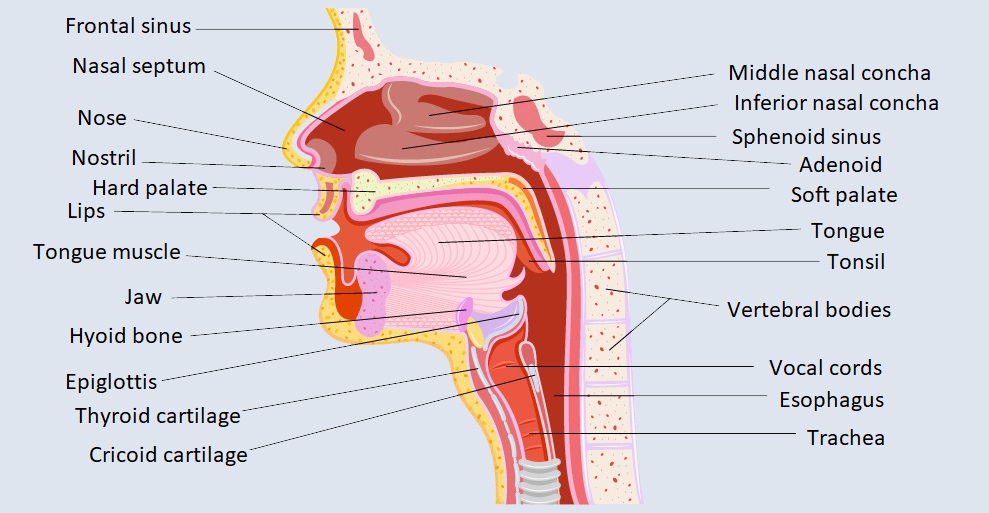Otolaryngology (ENT)
During the general otolaryngology examination, the ear, nasal and paranasal sinuses, oral cavity, pharynx, larynx, salivary glands, and the neck-area are examined. Depending on previous illnesses and existing complaints, additional tests may be performed after the basic examination.
The course of the otolaryngology examination
The following examinations may be performed in the framework of an otolaryngology clinic after recording the medical history:
- general ear-nose-throat examination (flexible and rigid endoscopy)
- hearing test
- tinnitus examination
- diagnosis of dizziness
- snoring, nocturnal respiratory failure – apnoea – examination
If any deviation is detected during the examination, its treatment is also performed (removal of cerumen, treatment of aphtha, etc.). If a respiratory allergy is suspected, it is also possible to perform a Prick test.

With what complaints is it recommended to consult an otolaryngologist?
- acute or chronic inflammation of the nose, throat and larynx
- swallowing disorders
- sound formation problems
- allergic complaints, sneezing
- persistent cough
- throat and adenoid-related complaints
- prolonged nasal congestion, nasal discharge
- snoring
- head and neck tumours
Otolaryngology surgeries at Medicover Private Hospital
- Tonsillectomy (adenoid and tonsil surgery)
- Nasal septum surgery – airway stenosis surgery (septoplasty)
- Nasal concha reduction surgery, nasal concha plastic surgery (Mucotomy)
- Thyroid surgery
- FESS surgery (Functional endoscopic paranasal sinus surgery)
- Diagnosis of nocturnal respiratory failure (sleep endoscopy) and surgery
- Surgery for benign laryngeal diseases
- Surgery of benign neck lesions, benign tumours
- Surgery for benign skin lesions on head and neck
- Opening of abscesses in neck, mouth, throat

Structure and function of the ear, nose, and larynx

The outer, middle, and inner ears are the sensory organs of hearing and balance. The outer ear includes the auricle, the external acoustic meatus, and the earlobe. At the end of the outer ear is the eardrum. In the middle ear, the auditory ossicles (malleus, incus, stapes) transmit the vibrations of the air to the cochlea. In the Corti-organ, which is located in the fluid-filled cochlea, the vibrations turn into stimuli. The nerve signals to the auditory centre of the brain are transmitted from here to the auditory nerve. From here, the nerve signals are transmitted to the auditory centre of the brain by the auditory nerve.
In terms of operation, we distinguish between a sound-transmitting and a sound-receiving system. The auricle, ear canal, eardrum, auditory ossicles, and labyrinth fluids belong to the sound transmitting system, while the section from the stimuli receiving hair cells of the Corti organ to the cerebral cortex belongs to the sound-receiving apparatus.
In human hearing, the outer, as well as the middle ear picks up and transmits sounds, which the inner ear converts into neural signals that are transmitted by the auditory nerve. Pre-processing and filtering then begin, followed by detection.
The volume that can be received by the human ear without hearing loss is between 30 and 80 decibels. Sounds stronger than 120 decibels can lead to permanent hearing loss or deafness.
The nose, which helps breathing, forms the first section of the upper airways. The nasal cavity with the bony nasal septum is divided into two symmetrical cavities that are lined with mucous membranes behind the nose, which continues in the skull bones through adjacent sinuses.
The nasal skeleton is made up of bones, cartilages and connective tissues, which is covered with skin on the outside and lined with mucous membranes on the inside. The face of the nose ends at the apex of the nose. The forward opening nasal openings are separated by the lower part of the nasal septum. The cartilage of the nose determines the shape of the nose. The bony skeleton of the nasal cavity is made up of several bones.


The larynx is located in front of the lower part of the pharynx, at the beginning of the lower respiratory tract. According to its function, it is responsible for preventing food and saliva from entering the lower respiratory tract. It allows swallowing and breathing to work together. It plays an important role in both sound formation and deep airway protection.
The laryngeal skeleton consists of thyroid cartilage, cricoid cartilage, arytenoid cartilage, and epiglottic cartilage and elastic accessory cartilage and ligaments. The laryngeal muscles, ligaments, and membranes are strained between the laryngeal cartilages, which promote the functionally essential movements of the laryngeal cartilage. The laryngeal muscles open and close the glottis and strain the vocal cords.

